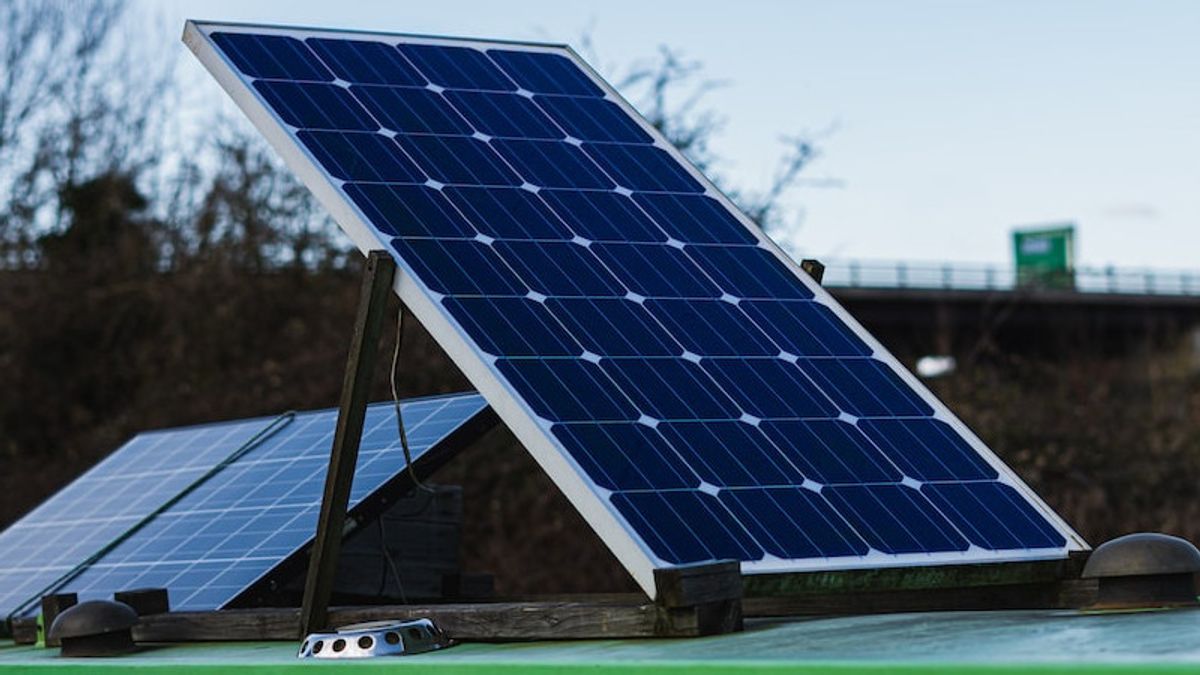YOGYAKARTA In simple terms, the solar panels will convert sunlight which is then converted into electric power. However, the way solar panels work is not that simple. The panel involves many components and has installation rules so that they can work optimally. For more details, see the following explanation.
The solar panels are a tool made up of various components to help make arrests, absorptions, and convert sunlight into electricity.
Broadly speaking, solar panels consist of solar cells to help with solar absorption. The cells consist of many components called photovoltaics, namely the technology used to convert solar radiation into electricity. Photovoltaic itself is in the form of a small cell attached to a solar panel. These cells consist of two pieces of semi-conductor material. Photovoltaics are usually made of silicon.
While solar cells themselves consist of many components. Generally consist of semiconductor silicon, metal, anti-reflective, and strip metal conductors.
From this understanding, it can be concluded that solar cells and solar panels are a series but different. Solar cells are solar panel cores that are lined up and connected in series and parallels. This set of solar cells is then named with panelsurya. In one solar panel it usually consists of 32 solar cells. But there are also those that compose 96 cells or 72 cells.
How solar panels actually work is simple. In principle, solar panels will convert solar energy successfully absorbed by solar cells into electricity. Inverter will convert electrical panels, from directional currents (DCs) to back and forth currents (ACs). This current is then stored in a battery and channeled through a cable for use in various purposes.
Meanwhile, in detail, the way solar panels work begins when sunlight consisting of photons hits a semiconductor atom present in the solar panels. This then has an impact on the separation of electrons from their atomic structures.
Electrons that have separated from atoms and have negative charges will move to the conductor. Meanwhile, atoms separated from their electrons will be positively charged. Negative free electrons can become n'' semiconductor donors. While positive charge semiconductors will be recipients of electrons'' or semiconductors of type p.
From positive and negative, it will give rise to energy that drives electrons and holes to opposite each other. This energy is then able to be a driving force for household electrical tools such as lights, washing machines, and so on.
The solar panels used to convert sunlight into electricity have many benefits for everyday life. Some of the benefits that can be felt are as follows.
The solar panels are said to be an environmentally friendly source of energy because they do not cause air pollution. That way this tool can be utilized without fear of damaging nature. In addition, the solar panels also have unlimited energy sources, namely sunlight.
The public continues to feel the increase in electricity prices determined by the government. The increase in electricity is due to many reasons, one of which is the increasing price of coal. High electricity bills will not have an impact on people who install solar panels for their daily needs.
PLN as a power supply company in Indonesia often repairs the network. When network repairs are carried out, they will usually be accompanied by temporary power outages. Solar panel users certainly will not feel the impact of blackouts so that activities can run normally.
That's information regarding how solar panels work. To get other interesting information, visit VOI.ID.
The English, Chinese, Japanese, Arabic, and French versions are automatically generated by the AI. So there may still be inaccuracies in translating, please always see Indonesian as our main language. (system supported by DigitalSiber.id)













